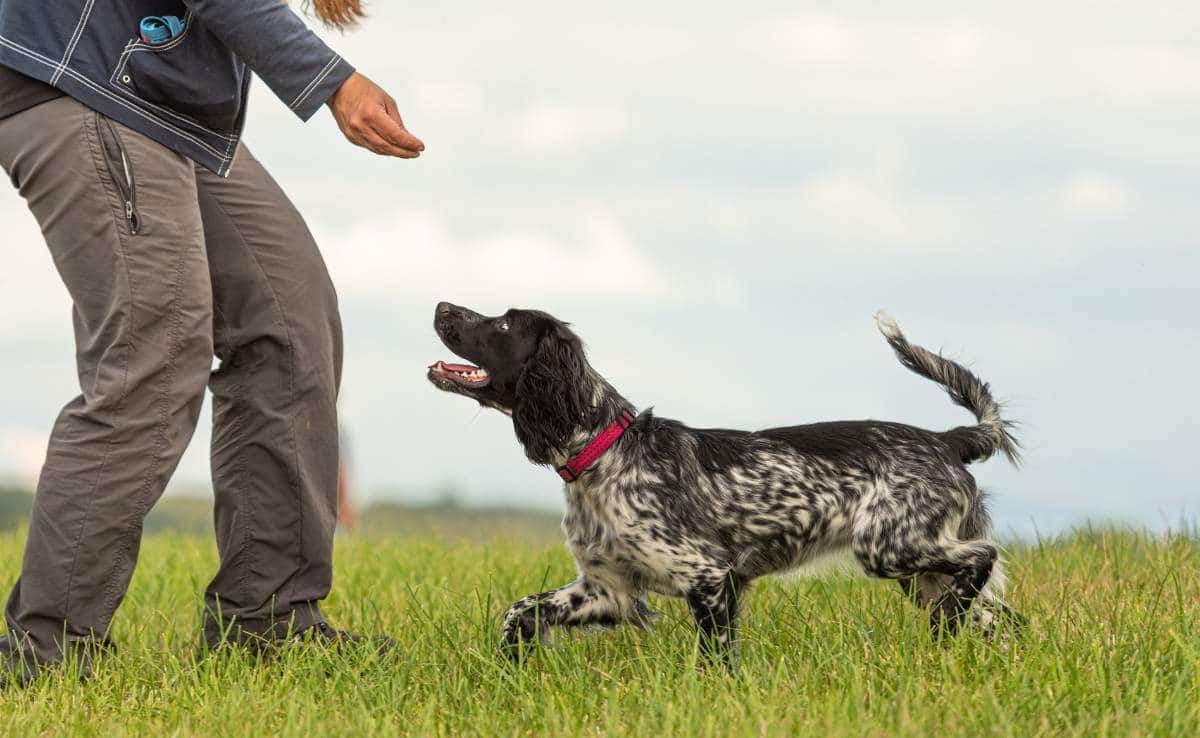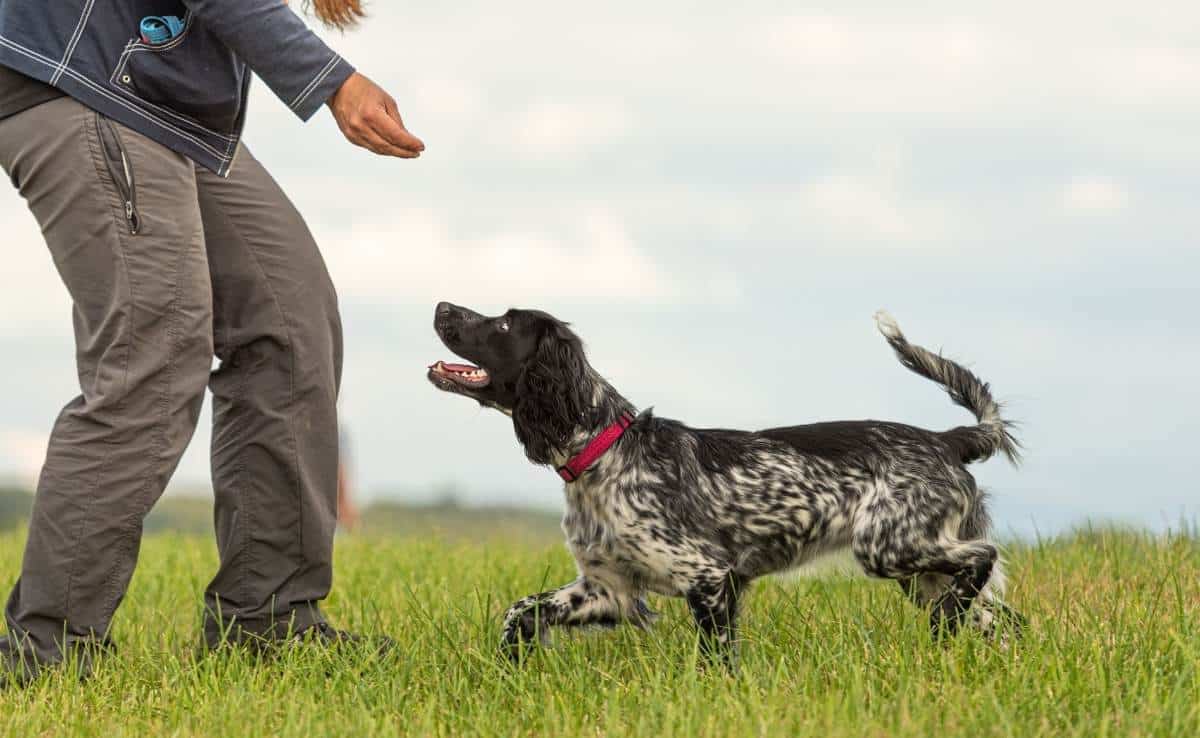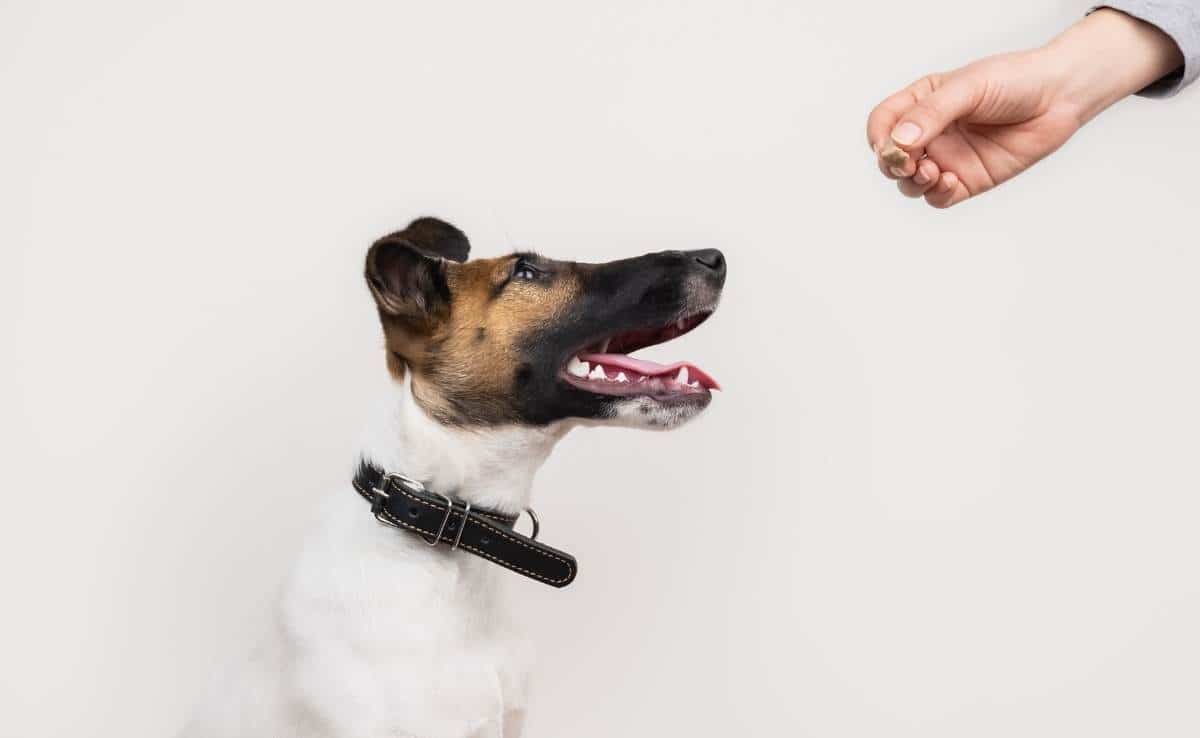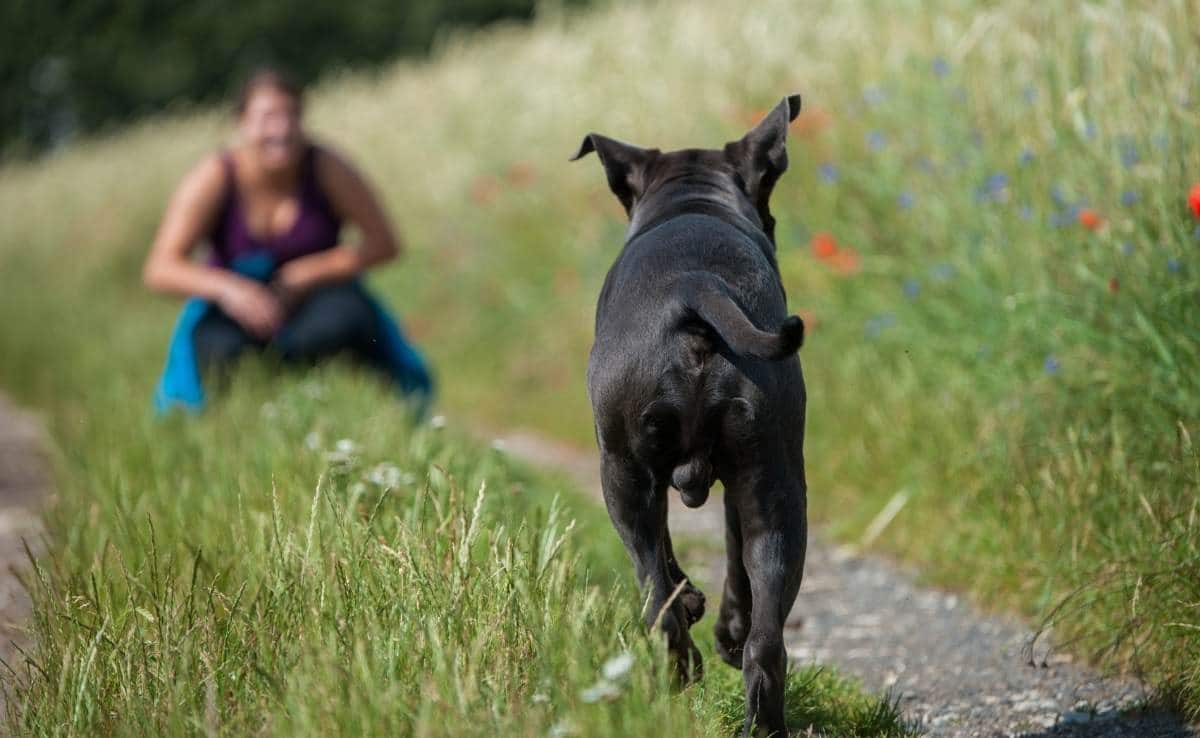
To keep the lights on, we receive affiliate commissions via some of our links. Our review process.
Training your dog to come when called, often referred to as “reliable recall,” is one of the most important things you can do to keep your pup safe and well-behaved. It’s also an essential dog command if you plan on letting your dog off-leash at the dog park, in the wilderness, and even in your yard to avoid a potentially dangerous situation. We give you step-by-step training guides, tips for success, and much more.

What’s The Best Dog Recall Training Method?
Contents
The goal of reliable recall training is to get your dog to associate coming to you with a positive, exciting, and rewarding experience. Using positive reinforcement training dramatically increases the likelihood that your pup will come to you every time you call (or, realistically, almost every time).
Giving your pup treats (or some other reward) and plenty of praise and physical affection will set you up for success. Never use a harsh voice, negative body language, or aversive training techniques, such as a shock collar for dog recall training.
What You’ll Need Before You Begin
Before you begin, you’ll need a few provisions, including training treats and a long loose training leash. You may want to invest in a treat pouch to make your training easier. You’ll also need to pick your recall verbal cue like “come” or “here.” You can use any word you choose, but you have to use it consistently when training. You also want to pick a word that you don’t casually use around the house. Your recall cue needs to be distinct.
How To Train A Dog To Come When Called
Training a dog takes a lot of patience, practice, and consistency. Some dogs master recall training faster than others. If you’re wondering how to teach a puppy to come, the process is the same. But you want to make sure your puppy knows her name and makes eye contact with you when you say it.

Essential Rules Of Recall Training
You should follow these four crucial rules while training your dog to come, according to the San Francisco Society for the Prevention of Cruelty to Animals (SFSPCA).
- Don’t give your pup your verbal cue to come for anything she won’t like while you’re training (e.g., going to her crate, leaving the dog park, going inside, etc.)
- Never use your verbal cue if you don’t think your dog will actually come (e.g, if she’s too distracted).
- If you call your dog and she doesn’t come, don’t repeat your verbal recall command. Only say it once, and then entice your dog to come to you using other measures (e.g., saying her name only, clapping, squatting down, or anything that will encourage her to come to you.
- Always give your pup a reward, praise, and positive attention when she comes when you use your cue.
First Steps: Indoor Training
Before you get into more advanced recall training, you’ll need to make sure your pup understands your verbal cue. In a quiet place in your home, follow these steps:
- Back up a few steps from your puppy or dog.
- Encourage her to come to you.
- When your pup is on her way to you, say “Fido, here!”
- Once your dog reaches you, give her a treat and praise (a verbal cue like “good.”) Some trainers suggest that you gently take or touch her collar and have her sit, so she understands that she should stay with you when you call her.
- Repeat this process, gradually moving further away from your dog.
- Reinforce this several times during your day, always sending your dog on her way after she gets her reward.
Expert Tip: Use everyday situations to reinforce your cue whenever your dog is already heading toward you (e.g., at mealtime, when playing fetch, when you’re heading toward the door to go for a walk, etc.) Don’t forget to reward and praise every time your dog responds to your cue.

Next, Move Training Outdoors
Moving training outside introduces more distractions for your pup. It’s important to begin outdoor training with a leash for your pup’s safety.
- First, practice backing up from your pup on-leash in your yard (see indoor training steps). If you have a fenced-in yard and once your pup is reliable on a leash, you can then practice this back-away technique with a long training leash and then off-leash.
- You can practice while you’re on walks. Start with your regular leash and then move on to a long leash.
- Practice with a long leash in several different environments with few distractions. If your dog ignores your command or gets distracted, go and get her and bring her to where you were standing when you called her. Praise, release, and repeat. Don’t drag her to you using the leash.
- Once your dog is reliable, you can then practice in places where there are more distractions (people, other dogs, cars, etc.). Start on your regular leash and then on the long training leash.
- Go to fenced-in areas to practice off-leash, gradually adding various distractions like toys, people, other dogs, etc.
Expert Tip: When using a long training leash, you can begin to let go of the leash and have your dog drag it along (with you staying close by). But only proceed with this if your dog has been reliable with you holding the leash.
Recall Training Exercises & Games
There’s no one definitive way to build reliable recall. To make it fun for you and your pup, you have many different techniques and games you can use to teach your dog to come in various situations. Here are a few of our favorites:
“Hide” And Seek
Randomly call your dog from separate rooms around the house when she’s not with you. When she finds you, give her rewards and praise. This is a great way to get your dog’s attention when she’s not expecting it.
Round Robin
Have two people stand apart (or several people in a wide circle) armed with treats. Take turns calling your dog and rewarding her when she comes. If she doesn’t come, the previous person who called your dog goes and gets him to try again.
Chase Me
Start walking your dog on a leash, then get her attention, turn around quickly and run several steps. As your pup follows you, give your cue. Then stop after a few steps and reward. Repeat a few times.
Look-At-Me
This game is an excellent way to teach your dog to focus on you, particularly when it comes to recall training with distractions. Start by tossing a couple of treats a few feet ahead of you. As your dog finishes gobbling but before she looks up, say her name. When she turns her head and looks at you, give her lots of praise and a different kind of reward (not the same treat). This could be an even better treat, like bacon, or a favorite squeaky toy. Repeat this process, gradually throwing the treats farther away from you.
How Do I Train For Distractions? (Video)
The brief video below from Emily Larlham, a professional dog trainer known for her popular YouTube Channel ‘Kikopup,’ shows you several different techniques for recall training using simple distractions. You’ll notice in this video that the trainer uses a clicker instead of a verbal praise word for your dog who has satisfied the come task. Clicker training can be extremely effective when teaching your pup many different skills.
Frequently Asked Questions
Here are some of the questions we see most often about how to teach a dog to come when called.
When Should I Start Recall Training?
You can start training a puppy to come at around eight weeks old. But first, make sure your puppy knows her name. Always keep puppy training short and sweet (five-minute sessions) and have lots of patience.
How Long Does Dog Recall Training Take?
Dogs learn in such varying ways and rates, that there’s no target timeline. In general, you can expect it to take three to six months of regular and consistent training to fully build reliable recall.
How Do I Teach My Dog To Come Without Treats?
If your dog isn’t motivated by food or you’d prefer training without treats, you can substitute a treat reward with a favorite toy. Squeaky toys work well for many dogs. Just make sure you have some reward for your pup to achieve success.
Do You Need Training Assistance?
If your recall training isn’t going as well as you hoped or you’re not confident in training on your own, you can always seek reinforcement from a professional dog trainer. Instead of paying a fortune for an in-person dog trainer, see our reviews of the best online dog training courses and dog training apps to find affordable training assistance if you need it. Some of these options even give you virtual access to professional dog trainers.
Tagged With: Training